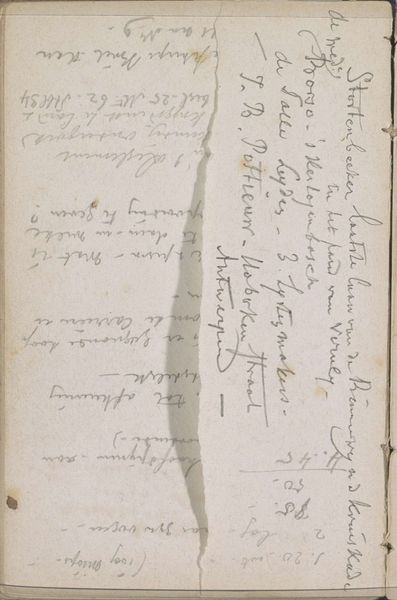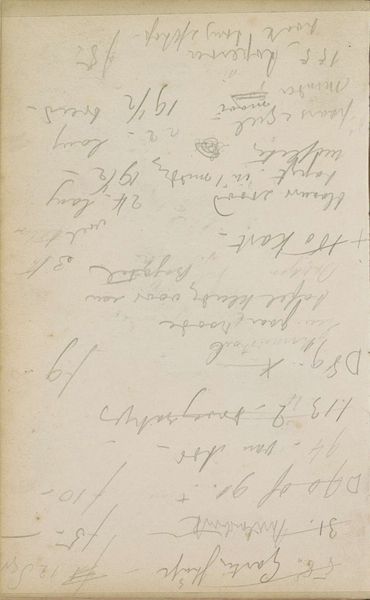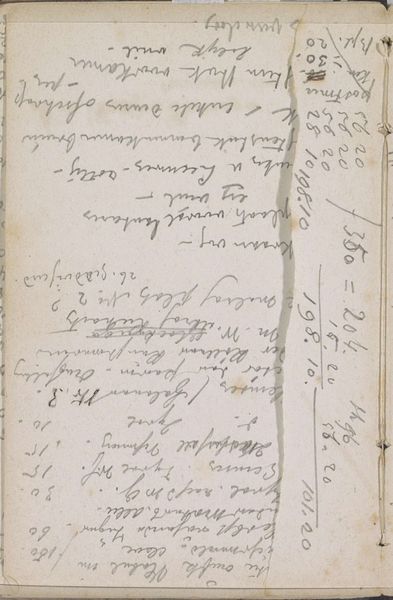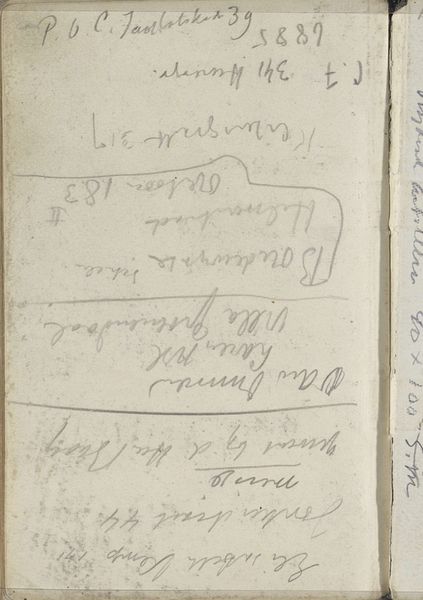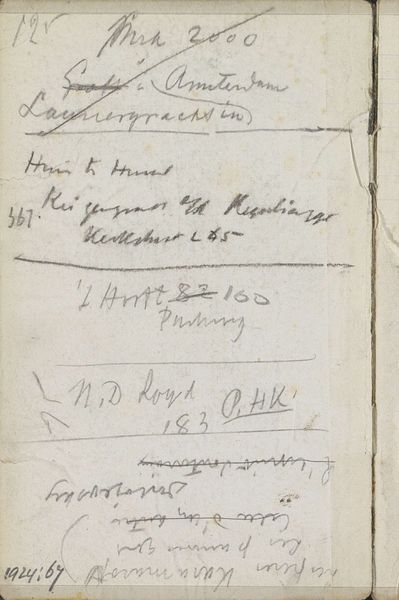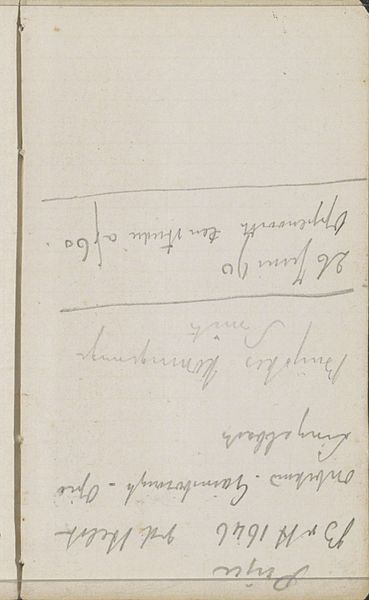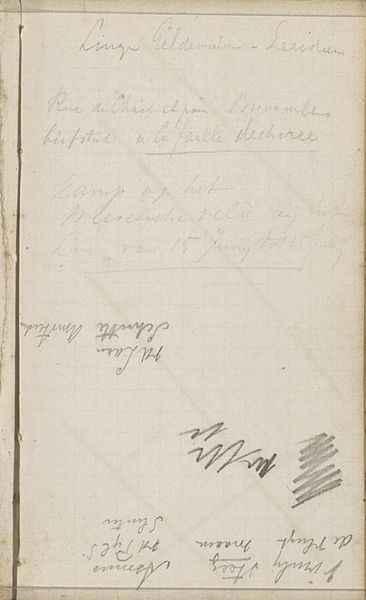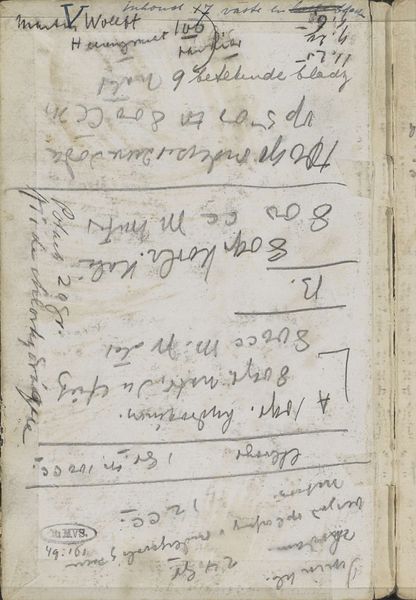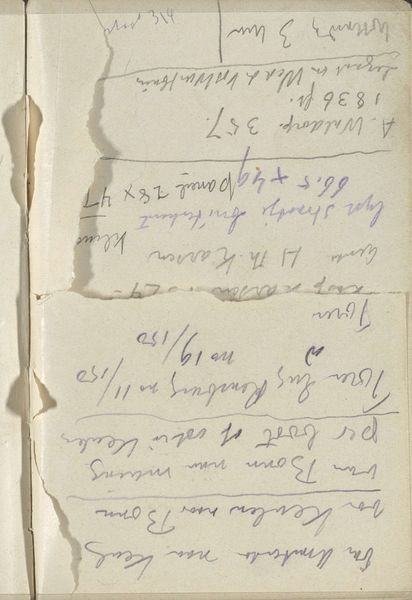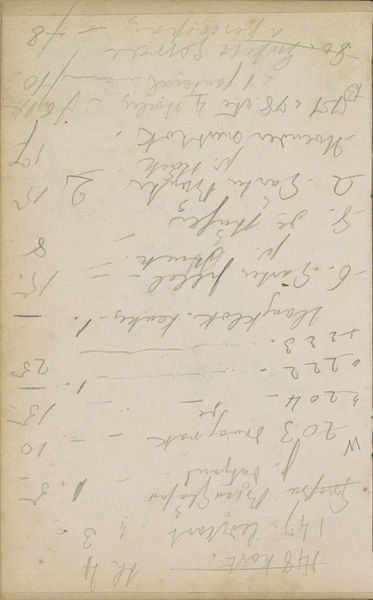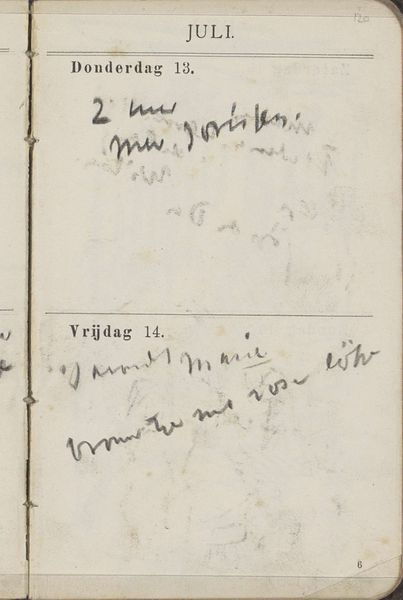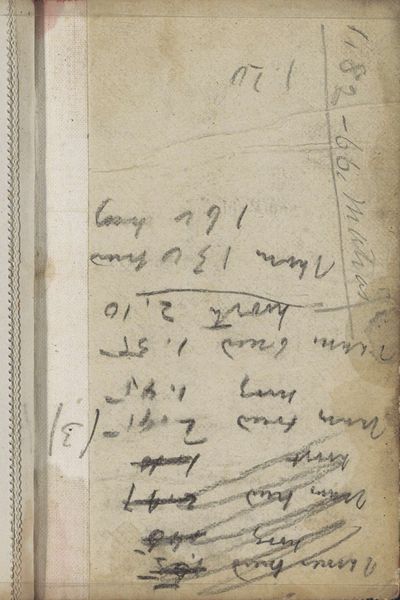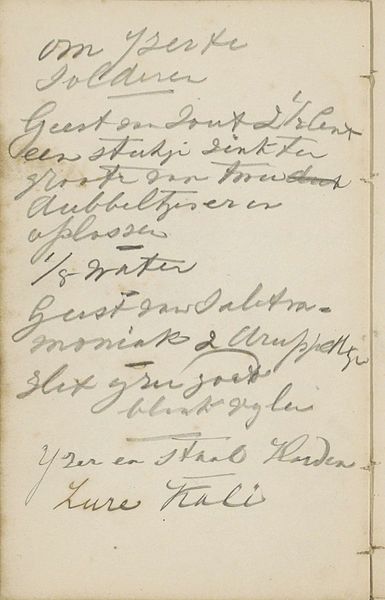
Copyright: Rijks Museum: Open Domain
Editor: This is "Notities," a mixed-media drawing on paper by Johannes Tavenraat, made sometime between 1862 and 1864. It looks like a page torn from a notebook, filled with pencil writing. What can you tell me about its significance? Curator: Well, first, consider the Romantic era it comes from. It places individual experience and emotion above all else, which, combined with a national reawakening happening throughout Europe, gave way to a revival of the diary as an essential genre. Diaries, in particular, became spaces of cultural importance for people experiencing exclusion and disenfranchisement. How might we interpret this humble list within that context? Editor: I suppose these scribbles could have had something to do with commerce... Did artists like Tavenraat have a voice in this, or were they primarily creating artwork? Curator: Artists weren’t exempt from these forces. Romanticism coincides with developing colonialism, racial discourses, industrialization, and revolution—the artist lives, breathes, and unconsciously reinforces these discourses in their work. Can we interpret the list through such frameworks? Is the artist’s freedom in art a kind of trap? What ideological choices may have been revealed by, say, purchasing "koff," or perhaps what wasn’t on this list? Editor: So you’re suggesting that this mundane list reflects the social and political issues of the time? It’s not just a shopping list. Curator: Exactly. Consider how everyday acts were, and still are, implicated in broader power structures. Think of whose labour affords these commodities, who profits, and who is rendered invisible. Editor: That's really fascinating. I never thought of a simple list as having so much historical weight and potential for critical interpretation. Curator: These details are subtle clues to understanding the values and anxieties of a specific time and place, reminding us that art is never created in a vacuum. It really forces us to re-think what narratives we have become accustomed to.
Comments
No comments
Be the first to comment and join the conversation on the ultimate creative platform.
